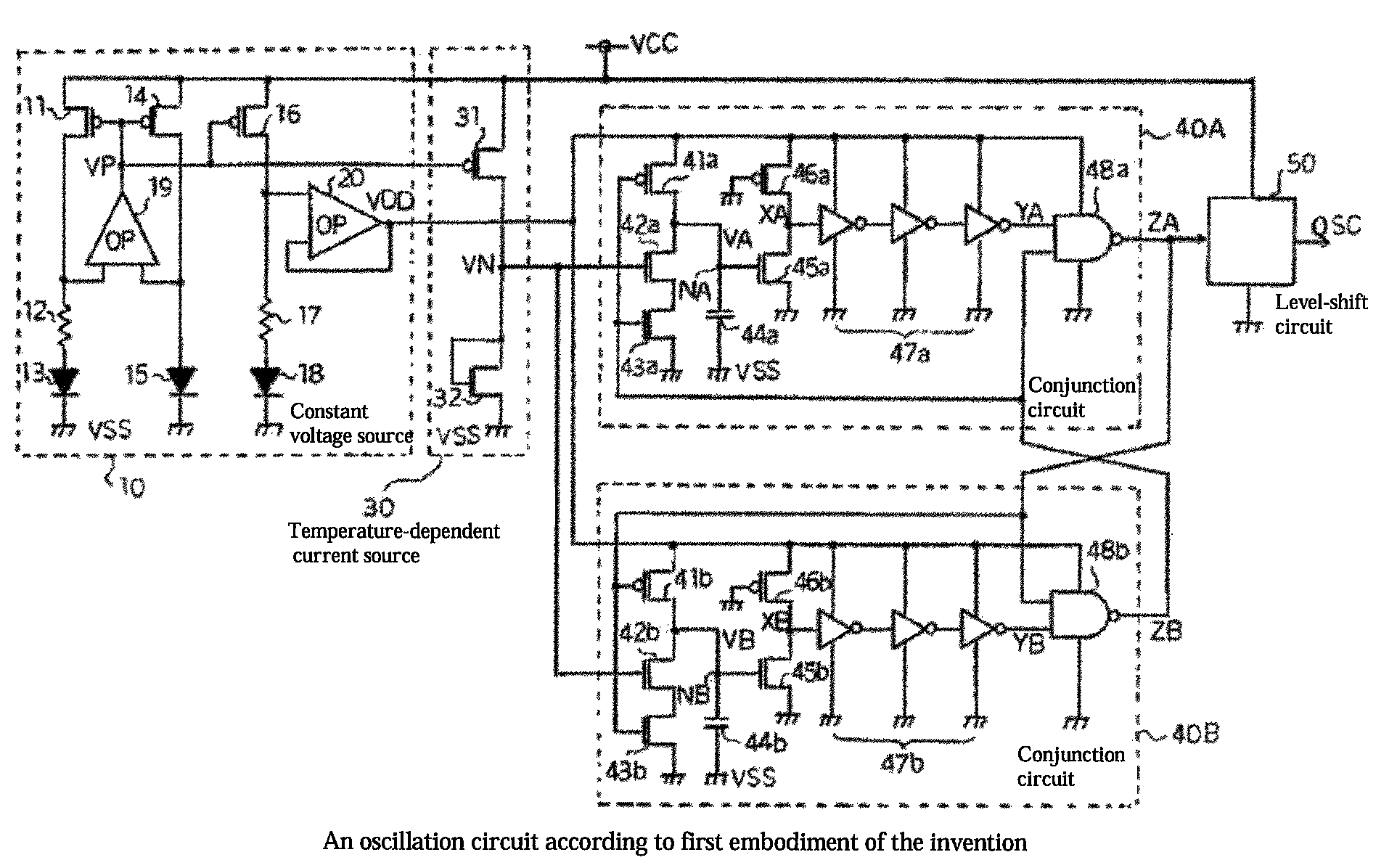Oscillation circuit with temperature-dependent current source
a current source and oscillator technology, applied in the field of oscillator circuits, can solve problems such as the inability to completely stabilize the frequency, and achieve the effect of small frequency variation
- Summary
- Abstract
- Description
- Claims
- Application Information
AI Technical Summary
Benefits of technology
Problems solved by technology
Method used
Image
Examples
first preferred embodiment
[0018]FIG. 1 is a circuit diagram of the first embodiment of the invention.
[0019]The oscillation circuit is configured by a constant voltage source 10, a temperature-dependent current source 30, a couple of conjunction circuits 40A, 40B composing an astable multi-vibrator.
[0020]The constant voltage source 10 generates a constant voltage VDD independently from the variations of the powers supply voltage VCC and the ambient temperature T.
[0021]The above constant voltage source 10 includes a serial circuit consisting of a P-channel MOS transistor (hereinafter referred to as ‘PMOS’) 11 connected between the power supply voltage VCC node and the ground voltage VSS node, a resistor 12, and a diode 13. Furthermore, a serial circuit of a PMOS 14 and a diode 15 and a serial circuit of a PMOS 16, a resistor 17, and a diode 18 are connected between the power supply voltage VCC node and the ground voltage VSS node. Drains of the PMOSs 11, 14 are connected to a non-inverted input terminal and an...
second preferred embodiment
[0054]FIG. 3 is a circuit diagram of an oscillation circuit according to the second embodiment of the invention. The oscillation circuit consists of a couple of disjunction circuits 70A, 70B composing a temperature-dependent current source 60 and the astable multi-vibrator.
[0055]The temperature-dependent current source 60 generates the voltage VP corresponding to the temperature and includes a serial circuit consisting of a PMOS 61 connected between the power supply voltage VCC node and the ground voltage VSS node, a resistor 62, and a diode 63. Furthermore, a serial circuit consisting of a PMOS 64 and a diode 65 is connected between the power supply voltage VCC node and the ground voltage VSS node. The drains of PMOSs 61, 64 are connected to a non-inverted terminal and a inverted terminal of an operational amplifier 65, respectively. The voltage VP from the output terminals of the above operational amplifier 66 is provided the gates of PMOSs 61, 64 and simultaneously outputted as a...
PUM
 Login to View More
Login to View More Abstract
Description
Claims
Application Information
 Login to View More
Login to View More - R&D
- Intellectual Property
- Life Sciences
- Materials
- Tech Scout
- Unparalleled Data Quality
- Higher Quality Content
- 60% Fewer Hallucinations
Browse by: Latest US Patents, China's latest patents, Technical Efficacy Thesaurus, Application Domain, Technology Topic, Popular Technical Reports.
© 2025 PatSnap. All rights reserved.Legal|Privacy policy|Modern Slavery Act Transparency Statement|Sitemap|About US| Contact US: help@patsnap.com



